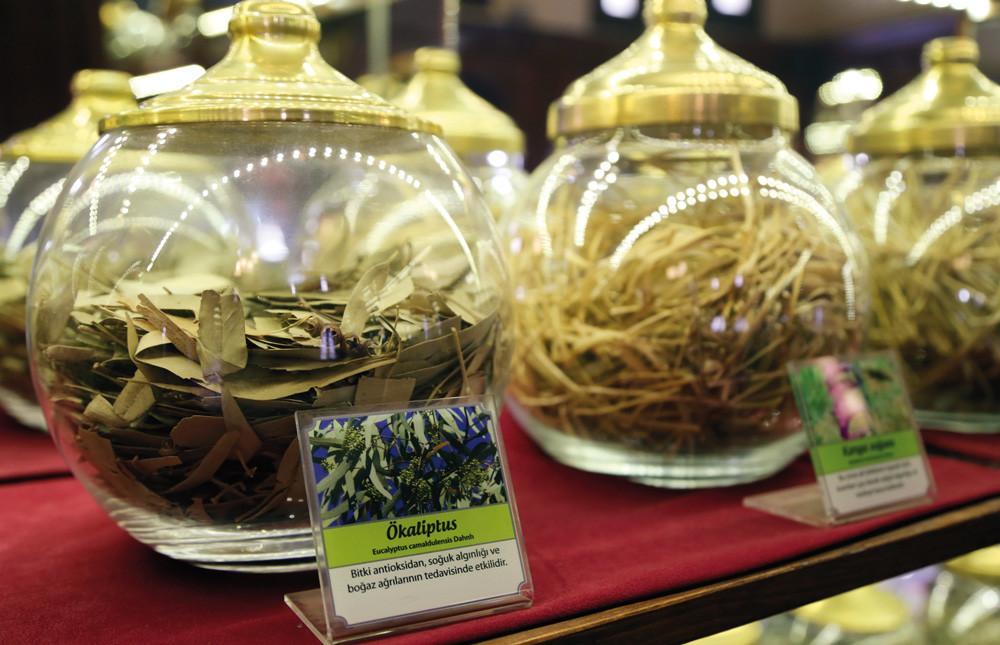
Turkey’s first Medical Aromatic Plants Museum, located in Turkey’s southeastern province of Hatay, resembles a pharmacy warehouse as it houses 280 medical and aromatic plant species.
The museum, opened by the Hatay Governor’s Office in 2013 in a restored two-story Antakya house, displays the photos of 280 plant species, nearly 200 dried herbs and the oils of some 50 endemic plants.
A unique venture, the museum receives some 10,000 local and foreign visitors a year and is known for displaying plants that are believed to cure flu-like diseases. The museum provides information about their use.
The museum advices hibiscus and thyme for flu, dead-nettle for stomach ache, Antakya cornflower for rheumatism, sage for throat ache, linden for cough and chest pain and oleander for small aches.
The museum offers visitors a tea, made of thyme, hibiscus and garnet and known as “zahter,” as well as various herbal teas.
Speaking to the state-run Anadolu Agency, the Hatay Food, Agriculture and Livestock Director Mehmet Andiç said the museum was the only museum in Turkey to provide people with information about the variety of herbs in the surrounding area.
“So far more than 3,500 endemic plant species have been detected in Turkey. 10 percent of these plants are in Hatay. Among nearly 2,500 plant species in our province, some 600 have medical and aromatic features. Anatolia’s fertile soil of is one of the best places in the world in terms of season and soil structure. We display 280 plant species in the museum. The photos of the plants are seen in seven different halls. We also display dried plants and oils,” he said.
Andiç said that the source of inspiration for the museum was the centers, where people were treated with herbs in the Ottoman state.
Andiç said nearly 90 plant species in the city were tradable. “We obtain over 600 tons of products from these plant species. The annual proceeds come to about 10 million Turkish Liras. There are hundreds of families who collect these plants from rural areas to make a living,” he said.
The museum’s official biologist Abdullah Er said the number of visitors increased during the spring and fall. He said the museum had hosted nearly 40,000 tourists since opening its doors.
Er also said the museum’s display of Hatay’s unique teas drew especial interest in winter months, when visitors tended to be more curious about which plant is good for which disease. They generally ask for plants to treat flu. We provide information about them. Here they see plants they have never previously seen. The museum changes their views about plants. Most of the plants in the museum are also used in the pharmaceutical sector,” he added.